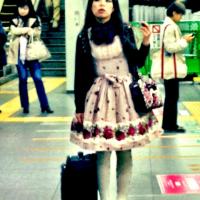In terms of sheer variety, Tokyo is undoubtedly the best place in the world to try premium sake. Between the frequent tasting events, excellent restaurants and sake bars, the city provides no shortage of opportunities. But once you’ve developed a taste for the good stuff, where can you go to purchase a bottle to enjoy in the privacy of your own home?
Many supermarkets and convenience stores sell sake, but most do not carry a wide selection of top-grade brews. Not to worry, a number of terrific specialty shops exist. Dotted across the city and sometimes hidden in random places, these purveyors of premium sake take their nihonshu seriously, and go the extra mile in caring for their bottles by storing them in large refrigerators. They delight connoisseurs with choice, and some even offer the chance to sample before you buy.
What is sake?
Sake or saké (/ˈsɑːkeɪ/, “sah-keh”) is an alcoholic beverage of Japanese origin that is made from fermented rice. Sake is sometimes called “rice wine” but the brewing process is more as rice beer, converting starch to sugar for the fermentation process.
In the Japanese language, the word “sake” generally refers to any alcoholic drink, while the beverage called “sake” in English is usually termed nihonshu (日本酒, “Japanese liquor”). Under Japanese liquor laws, sake is labelled with the word “seishu” (清酒, “clear liquor”), a synonym less commonly used colloquially.
Sake is sometimes referred to in English-speaking countries as rice wine. However, unlike wine, in which alcohol is produced by fermenting sugar that is naturally present in grapes and other fruits, sake is produced by means of a brewing process more like that of beer. To make beer or sake, the sugar needed to produce alcohol must first be converted from starch.
The brewing process for sake differs from the process for beer, in that for beer, the conversion from starch to sugar and from sugar to alcohol occurs in two discrete steps. But when sake is brewed, these conversions occur simultaneously. Furthermore, the alcohol content differs between sake, wine, and beer. Wine generally contains 9%–16% ABV, while most beer contains 3%–9%, and undiluted sake contains 18%–20% (although this is often lowered to about 15% by diluting with water prior to bottling).
The history of sake
The origin of sake is unclear. The earliest reference to the use of alcohol in Japan is recorded in the Book of Wei in the Records of the Three Kingdoms. This 3rd century Chinese text speaks of the Japanese drinking and dancing. Bamforth (2005) noted that the probable origin of sake was in the Nara period (710–794 AD).
Sake is mentioned several times in the Kojiki, Japan’s first written history, which was compiled in 712 AD
By the Asuka period, true sake, that which is made from rice, water, and kōji mold (麹, Aspergillus oryzae), was the dominant alcohol and had a very low potency. In the Heian period, sake was used for religious ceremonies, court festivals, and drinking games.[4] Sake production was a government monopoly for a long time, but in the 10th century, temples and shrines began to brew sake, and they became the main centers of production for the next 500 years. The Tamon-in Diary, written by abbots of Tamon-in (temple) from 1478 to 1618, records many details of brewing in the temple. The diary shows that pasteurization and the process of adding ingredients to the main fermentation mash in three stages were established practices by that time.
In the 16th century, the technique of distillation was introduced into the Kyushu district from Ryukyu. The brewing of shochu, called “Imo—sake” started, and was sold at the central market inKyoto. Powerful daimyo imported various liquors and wine from China.

This is the title page of the earliest explanation of the process of brewing sake to be published in the West. In 1781, Isaac Titsingh published Bereiding van Sacki in Batavia, which was then the main city of the Dutch East Indies. (Photo credit: Wikipedia)
Title page of Bereiding van Sacki, byIsaac Titsingh: earliest explanation of the sake brewing process in the Dutch language. Published in 1781, in Batavia, Dutch East Indies.
In the 18th century, Engelbert Kaempfer and Isaac Titsingh published accounts identifying sake as a popular alcoholic beverage in Japan; but Titsingh was the first to try to explain and describe the process of sake brewing. The work of both writers was widely disseminated throughout Europe at the beginning of the 19th century.
During the Meiji Restoration, laws were written that allowed anybody with the money and know-how to construct and operate their own sake breweries. Around 30,000 breweries sprang up around the country within a year. However, as the years went by, the government levied more and more taxes on the sake industry and slowly the number of breweries dwindled to 8,000.
Most of the breweries that grew and survived this period were set up by wealthy landowners. Landowners who grew rice crops would have rice left over at the end of the season and, rather than letting these leftovers go to waste, would ship it to their breweries. The most successful of these family breweries still operate today.
During the 20th century, sake-brewing technology grew by leaps and bounds. The government opened the sake-brewing research institute in 1904, and in 1907 the very first government-run sake tasting/competition was held. Yeast strains specifically selected for their brewing properties were isolated and enamel-coated steel tanks arrived. The government started hailing the use of enamel tanks as easy to clean, lasting forever, and being devoid of bacterial problems. (The government considered wooden barrels to be unhygienic because of the potential bacteria living in the wood.) Although these things are true, the government also wanted more tax money from breweries, as using wooden barrels means that a significant amount of sake is lost to evaporation (somewhere around 3%), which could have otherwise been taxed. This was the end of the wooden-barrel age of sake and the use of wooden barrels in brewing was completely eliminated.
In Japan, sake has long been taxed by the national government. In 1898, this tax brought in about 55 million yen out of a total of about 120 million yen, about 46% of the government’s total direct tax income.
During the Russo-Japanese War in 1904–1905, the government banned the home brewing of sake. At the time, sake still made up an astonishing 30% of Japan’s tax revenue. Since home-brewed sake is tax-free sake, the logic was that by banning the home brewing of sake, sales would go up, and more tax money would be collected. This was the end of home-brewed sake, and the law remains in effect today even though sake sales now make up only 2% of government income.
When World War II brought rice shortages, the sake-brewing industry was dealt a hefty blow as the government clamped down on the use of rice for brewing. As early as the late 17th century, it had been discovered that small amounts of alcohol could be added to sake before pressing to extract aromas and flavors from the rice solids, but during the war, pure alcohol and glucose were added to small quantities of rice mash, increasing the yield by as much as four times. 75% of today’s sake is made using this technique, left over from the war years. There were even a few breweries producing “sake” that contained no rice at all. Naturally, the quality of sake during this time varied greatly.
After the war, breweries slowly began to recover, and the quality of sake gradually went up. However, new players on the scene—beer, wine, and spirits—became very popular in Japan, and in the 1960s beer consumption surpassed sake for the first time. Sake consumption continued to go down while, in contrast, the quality of sake steadily improved.
Today, sake has become a world beverage with a few breweries springing up in China, Southeast Asia, South America, North America, and Australia. More breweries are also turning to older methods of production.
While the rest of the world may be drinking more sake and the quality of sake has been increasing, sake production in Japan has been declining since the mid-1970s. The number of sake breweries is also declining. While there were 3,229 breweries nationwide in fiscal 1975, the number had fallen to 1,845 in 2007.
October 1 is the official Sake Day (日本酒の日) of Japan.
Recommended sake stores around Tokyo:
Hasegawa Sakaten
This stylish sake enclave in Omotesando Hills features a small standing bar where patrons can taste brews on the weekly changing menu starting at ¥300 per 50ml glass. Their friendly and knowledgeable staff will help you pick the perfect bottle, and some staff members can assist you in English. The newest location, in the basement of Tokyo Station‘s Gransta shopping area, is a great place to wait for that next Shinkansen bullet train – they even have bar stools.
Jingumae 4-12-14, Omotesando Hills 3F | Tel. 03-5785-0833
Fukumitsuya
The interior of Fukumitsuya more closely resembles a gallery than a sake store, but the shop represents a brewery in Kanazawa that dates back to 1625. Everything, from the sake bottles to the delicate glassware, is attractively displayed and tastefully backlit. A bar runs along the left side of the shop, where you can order sizable pours from ¥600 off the English menu.
Ginza 5-5-8 | Tel. 03-3569-2291
Meishu Center
At the other end of chic in Hamamatsucho, the tasting bar here provides a terrific chance for sake buffs to nerd out. What the Meishu Center lacks in style, it more than makes up for in the quality and breadth of sake available. They will even set up a blind tasting for you. No English spoken.
Hamamatsucho 2-3 | Tel. 03-5405-4441
Aji no Machidaya
This cool and quirky shop boasts and impressive collection of one-cup sakes, in addition to the amazing variety available in larger bottles.
Kamitakada 1-49-12 | Tel. 03-3389-4551
Suzuki Mikawa Sake
This little shop in Akasaka features a nice selection of sake from several producers representing the new generation of young brewers. Most of the bottles are available for informal tasting – the staff will give you a small plastic cup and leave you to it. English service is limited.
Tel. 03-3583-2349
Sakaya Kurihara
Feast your eyes on the excellent selection at this small shop in Hiroo. You’ll even be able to read the shelf-talkers – most include brief explanations in English.
Moto-Azabu 3-6-7 | Tel. 03-3408-5378
Mitsuya
The folks at Mitsuya have crammed their tiny shop full of great sake from all over the country. Once a month, you can join their benkyoukai tasting events, which feature a different brewery each time (in Japanese only). Ask the staff for more information.
Nishi-Ogikubo Minami 2-28-15 | Tel. 03-3334-7447
Iseyuu
An incongruously hip shop in down-to-earth Saginomiya, Iseyuu features a small but well-chosen selection with some interesting and hard-to-
find brews.
Saginomiya 3-35-3 | Tel. 03-3330-0434
Shinkawaya
A hidden gem in Gaienmae, this place has everything you would want in a local shop – great sake, good prices, and helpful, laid-back service. They hold tasting events every season, so check with the staff for details.
Jingumae 2-4-1 | Tel. 03-3401-4462











